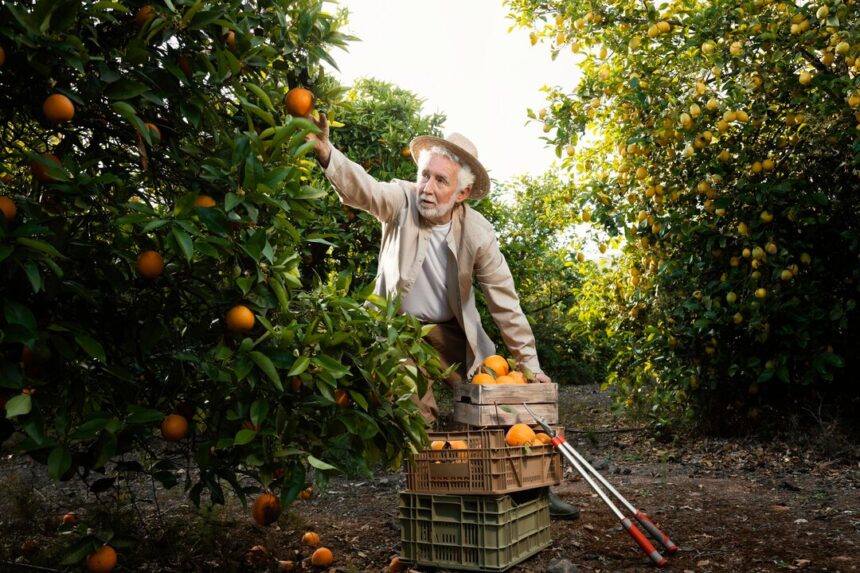South Africa is renowned for its vibrant citrus industry, with oranges being one of the country’s most valuable agricultural commodities. From the sweet and juicy Navel oranges to the tangy and versatile Valencia oranges, South African citrus growers strive to produce high-quality fruit that meets international standards. To maintain competitiveness and ensure sustainability in the citrus sector, implementing techniques for enhancing the quality and yield of oranges is essential. Here are some strategies to unlock success in orange cultivation in South Africa:
1. Soil Management and Fertilization:
- Healthy soil is the foundation of a successful orange orchard. Conduct regular soil tests to assess nutrient levels and pH balance, and amend the soil as needed with organic matter and appropriate fertilizers. Balanced nutrition promotes vigorous growth, improves fruit quality, and enhances yield potential.
2. Irrigation Management:
- Consistent and efficient irrigation is crucial for optimal orange production, especially in regions with irregular rainfall patterns. Implement drip irrigation or micro-sprinkler systems to deliver water directly to the root zone while minimizing water wastage. Monitor soil moisture levels and adjust irrigation schedules based on weather conditions to prevent water stress and ensure fruit development.
3. Pruning and Canopy Management:
- Proper pruning and canopy management are essential for maintaining healthy orange trees and maximizing fruit yield. Prune to remove dead or diseased branches, improve air circulation, and shape the canopy for optimal light penetration. Thinning the canopy can also reduce competition among branches and promote uniform fruit ripening.
4. Pest and Disease Management:
- Vigilant pest and disease management practices are critical for protecting orange orchards from damaging insects, pathogens, and pests. Implement integrated pest management (IPM) strategies, including cultural practices, biological control, and targeted pesticide applications, to minimize pest pressure and reduce the risk of fruit damage.
5. Thinning and Fruit Sizing:
- Thinning excess fruit from orange trees helps reduce competition among fruits and ensures more consistent fruit sizing and quality. Thin fruit clusters to a manageable number, allowing remaining fruit to develop to optimal size and maturity. This practice enhances fruit flavor, juiciness, and marketability.
6. Post-Harvest Handling and Storage:
- Proper post-harvest handling and storage practices are essential for preserving orange quality and extending shelf life. Handle fruit carefully to avoid bruising or damage, and promptly cool oranges to the optimal storage temperature to slow ripening and maintain freshness. Implement controlled atmosphere storage and ethylene management techniques to prolong storage life and reduce post-harvest losses.
7. Variety Selection and Rootstock Compatibility:
- Selecting the right orange varieties and rootstocks is crucial for achieving desired yield, fruit quality, and disease resistance. Choose varieties suited to local growing conditions and market preferences, and ensure compatibility between scion and rootstock to optimize tree performance and longevity.
8. Pollination Management:
- Adequate pollination is essential for maximizing fruit set and yield in orange orchards. Encourage pollinator activity by maintaining diverse flowering plants in and around orchards, providing nesting sites and habitat for pollinators, and avoiding the use of harmful pesticides during bloom.
9. Integrated Orchard Management:
- Adopt an integrated approach to orchard management that considers the interplay of agronomic practices, environmental factors, and socio-economic considerations. Incorporate sustainable farming practices, such as cover cropping, mulching, and soil conservation, to improve soil health, water retention, and ecosystem resilience.
10. Continuous Learning and Innovation:
- Stay informed about the latest research, technologies, and best practices in orange cultivation through participation in workshops, seminars, and industry events. Embrace innovation and experimentation to adapt to changing market demands, climate variability, and regulatory requirements, and continuously strive for improvement in orchard management and fruit quality.
By implementing these techniques for enhancing quality and yield in orange cultivation, South African citrus growers can unlock the full potential of their orchards and maintain their position as global leaders in citrus production. With a commitment to sustainability, innovation, and excellence, the future of the South African orange industry shines bright, promising continued success and prosperity for generations to come.
Join 'Farmers Mag' WhatsApp Channel
Get the latest Farming news and tips delivered straight to your WhatsApp
CLICK HERE TO JOIN






